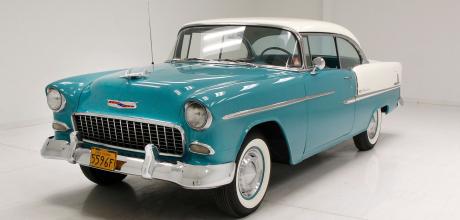Stock or modified?

Evans debates the merits of keeping your classic in factory condition or adding upgrades to make it more suitable for today’s roads
In the world of classic cars and, I’ll wager, particularly on this side of the pond, the age old argument of factory stock versus modified continues. Most of us, no doubt, are drawn to classic cars and trucks due to the way they look, both their exterior styling and interior features. Yet, depending on the age of the vehicle, its intrinsic value and, often, the condition it was purchased in, can have a healthy bearing on whether we decide to keep it as it is, or restore it to the way it came from the assembly plant, or add some personal touches for both mechanical improvement and aesthetic exclusivity.
Really, I think it comes down to personal taste and preference. Traditionally, at many stateside car shows, modified rides tend to outnumber factory stock vehicles by at least two to one. If we look at staples such as early Thirties Fords, Tri-Chevys, early Camaros and Mustangs, most of them will be hot-rodded or customised in some form or another.
There are a number of reasons for this. Firstly, that aftermarket performance parts are widely available and secondly, driving an original version of any of these cars, with their original brakes, steering, or style of tyres can be a hairraising experience, especially in modern traffic situations. On the flipside, it’s very easy today to have a car that retains most of its original lines, but sports a late-model, fuel-injected engine, overdrive transmission, upgraded independent suspension, all-around disc brakes, billet wheels and sticky modern rubber. Cars like this are what I like to refer to today as turnkey classics. They may look old, but they drive like a modern vehicle and almost anybody can get behind the wheel and hit the road.
There are tons of them out there and many trade hands for more money than an original condition version of the same make and model. Yet there’s a certain indescribable charm about a vehicle that’s original and even unrestored and as time goes on, I would argue that this charm only grows. Okay, so depending on the era of the car, it might boast some less desirable features such as mechanical or four-wheel drum brakes; twoor three-speed transmission, cross-ply tyres and a lack of amenities, but when you’re able to drive and sample a car or truck like this, it gives you an appreciation of just how far we’ve come in terms of drivability and safety, as well as testing and honing your own driving skills.
Yet for most of us, it’s about finding that optimal balance between classic car charm and good usability in order to maximise the ownership experience. In terms of factory stock American iron, I would argue that this balance reached its zenith during the late Eighties.
Cars of this era, I feel, were the first that could be considered truly reliable, and the last to embody that classic automotive feel. Most vehicles from this era, if you can find them today, boasted fuel-injected engines, front or all-disc brakes, comfortable seats and decent interior ergonomics.
Even today, 30 years after the fact, what’s interesting is that cars of this era still don’t actually feel old when you drive them. I look at my own third-generation Pontiac Firebird Trans Am as a prime example. Today, the styling is utterly distinctive and, in many ways, very period, but each time I turn the key and go for a drive, I’m reminded just how usable this car still is. It’s 33 years older than my daily driver, but in terms of handling, acceleration and braking it really isn’t all that different. With that said, it does have a raw and defining character to it that’s missing from today’s vehicles, even high-performance ones. Instead of relying on technology to help you out, you still have to actually drive it; and the car rewards those that choose to hone their driving craft while penalising those that don’t.
The car is essentially in factory stock condition and while it is easier (and tempting) to modify it with an LS1 engine, state-of-the-art aftermarket suspension, as well as bigger tyres and brakes, I feel that doing so would reduce its defining character and actually make it less appealing to own.
On the other hand, owning a 1955 Chevrolet, a mid-Sixties muscle car or even a 1932 Ford V8 would, for me, present a different situation. As much as I like originality, I do also value safety and adding updated suspension, brakes and tyres, as well as an overdrive transmission, would do wonders for all three.
So what are your thoughts when it comes to keeping a vehicle original or modifying it to your own personal preference? Is one better than the other or does it simply boil down to personal preference and taste?
With a 1955 Chevrolet like this, would you choose to keep it stock or modify it? Huw Evans (Photo credit: General Motors)

